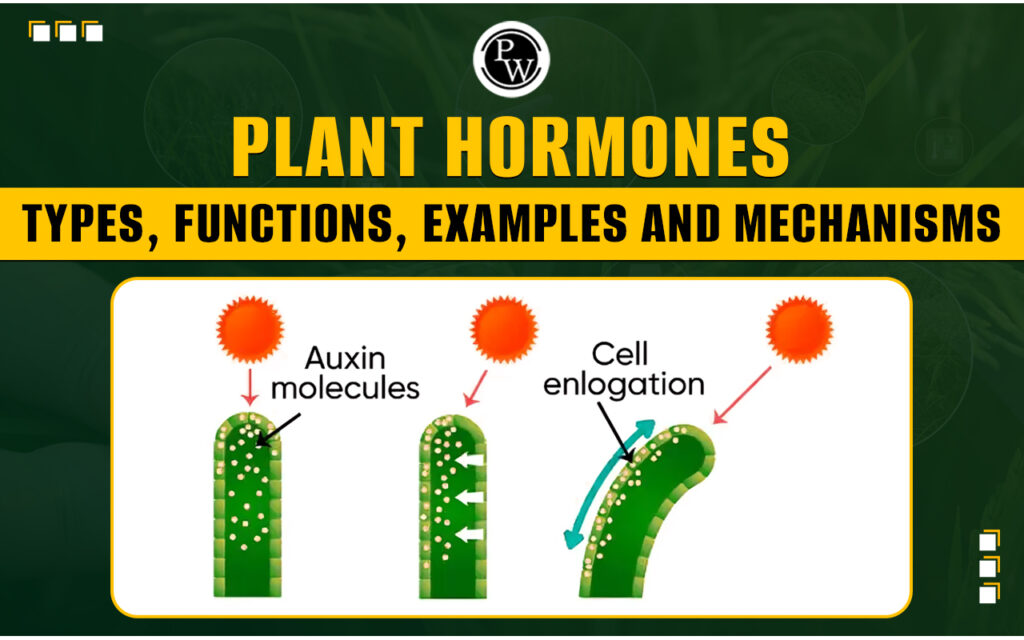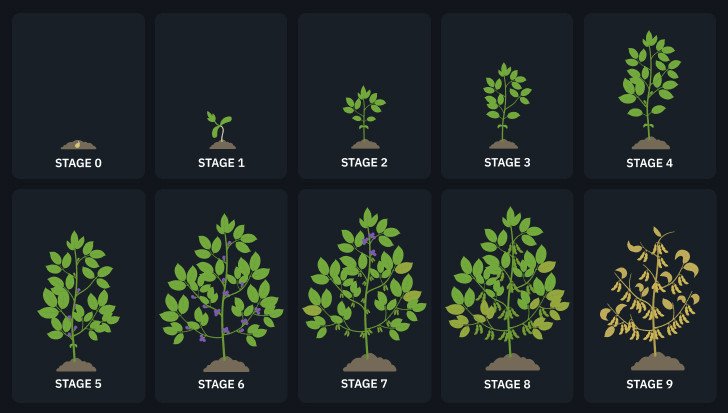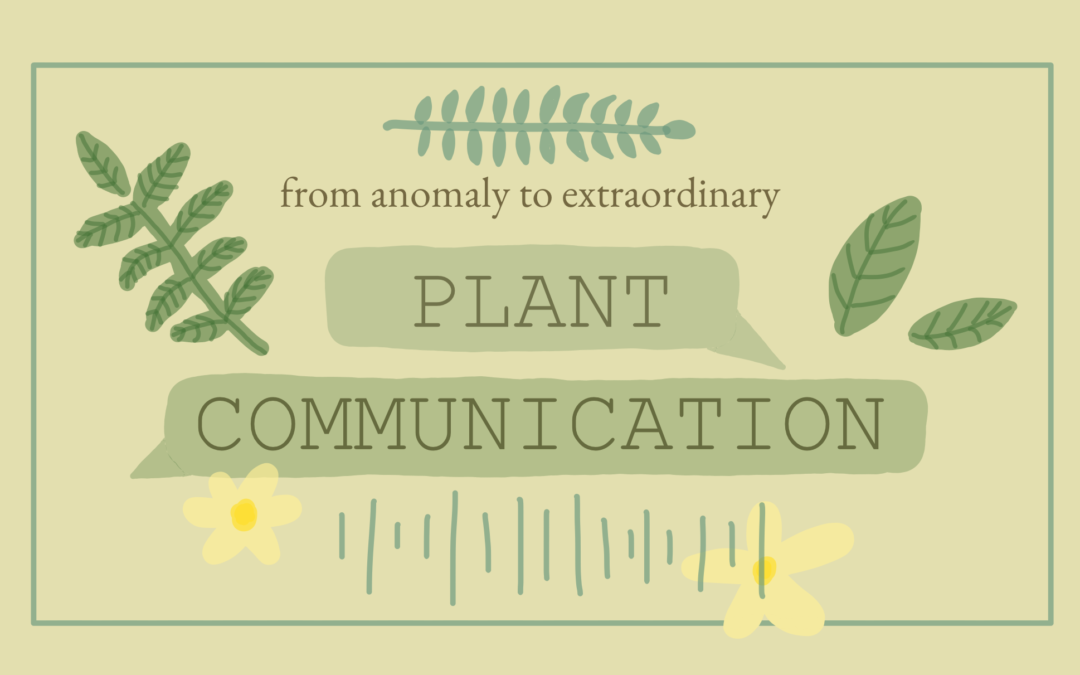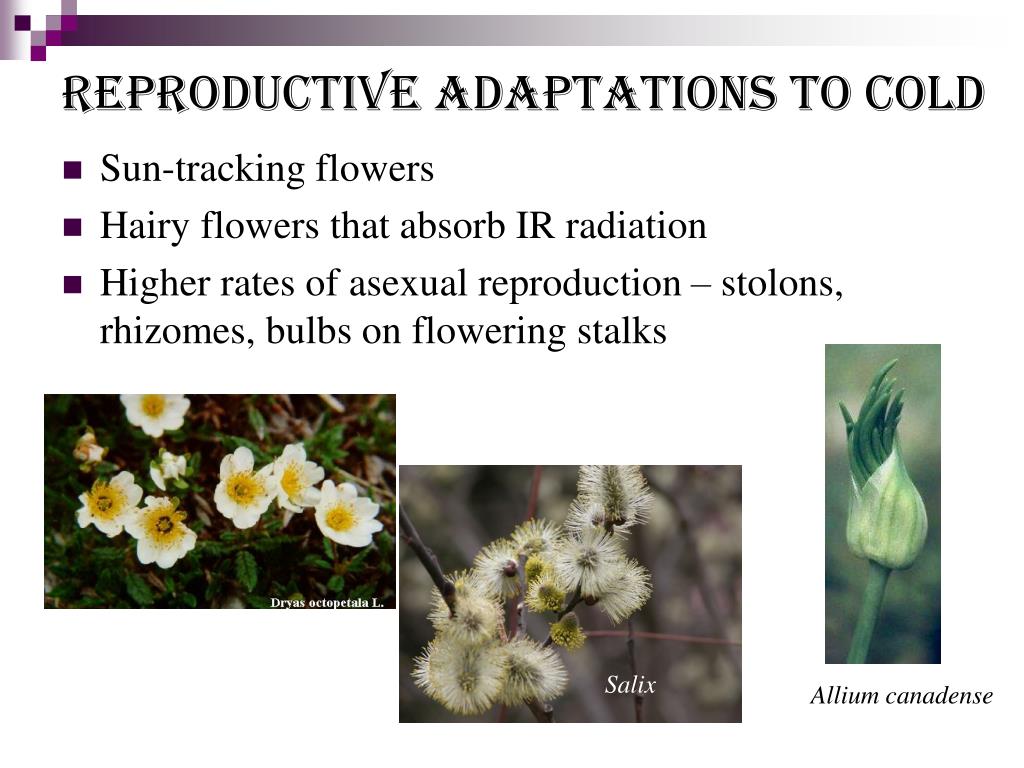
Introduction: The Silent Language of Plants
Plants, often perceived as passive organisms, are in reality bustling with internal communication, orchestrated by a sophisticated network of chemical messengers known as plant hormones, or phytohormones. These remarkable compounds, produced in minute quantities, play a pivotal role in regulating virtually every aspect of a plant’s life cycle, from germination to senescence. Understanding their functions is crucial not only for botanists and agricultural scientists but also for anyone fascinated by the intricate workings of the natural world. Think of plant hormones as the ‘words’ in a silent, yet powerful, conversation happening within the plant, and between the plant and its environment.
This comprehensive guide delves deep into the fascinating realm of plant hormones, exploring their individual roles, their complex interactions, and their significance in plant growth, development, and adaptation. We’ll uncover the key functions of the major plant hormones, examine how they influence various physiological processes, and consider their applications in agriculture and horticulture. So, buckle up and get ready to explore the amazing world of plant hormones!
The Major Players: An Overview of Key Plant Hormones
While numerous compounds exhibit hormonal activity in plants, a select few are considered the major players, exerting widespread influence on plant physiology. These include:
- Auxins: The growth promoters, primarily responsible for cell elongation, apical dominance, and root development.
- Cytokinins: The cell division stimulators, promoting shoot growth, delaying senescence, and influencing nutrient allocation.
- Gibberellins (GAs): The elongation enthusiasts, involved in stem elongation, seed germination, and flowering.
- Abscisic Acid (ABA): The stress manager, regulating stomatal closure, seed dormancy, and responses to drought and other environmental stresses.
- Ethylene: The ripening agent, promoting fruit ripening, senescence, and responses to stress and injury.
- Brassinosteroids (BRs): The multi-taskers, affecting cell elongation, vascular development, and stress tolerance.
- Jasmonates (JAs): The defense activators, involved in plant defense against herbivores and pathogens.
- Salicylic Acid (SA): The immunity booster, playing a key role in plant defense against pathogens, particularly in systemic acquired resistance (SAR).
Let’s explore each of these in detail to understand their unique roles.
Auxins: The Architects of Plant Growth
Auxins, derived from the Greek word “auxein” meaning “to increase,” are a class of plant hormones primarily known for their role in promoting cell elongation. Indole-3-acetic acid (IAA) is the most abundant and physiologically active naturally occurring auxin. Synthesized primarily in apical meristems (the growing tips of shoots), auxins are transported downwards through the plant, influencing a wide range of developmental processes. Think of auxins as the master architects, shaping the plant’s form and directing its growth.
Key Functions of Auxins:
- Cell Elongation: Auxins stimulate cell elongation by increasing the plasticity of the cell wall, allowing cells to expand under turgor pressure. This is crucial for stem elongation, leaf expansion, and overall plant growth.
- Apical Dominance: Auxins suppress the growth of lateral buds, a phenomenon known as apical dominance. This ensures that the main stem grows taller, allowing the plant to compete for sunlight. Pruning the tip of a plant removes the source of auxin, releasing the lateral buds and promoting bushier growth.
- Root Development: Auxins promote the formation of adventitious roots (roots that arise from non-root tissues) and stimulate the growth of existing roots. This is essential for anchoring the plant and absorbing water and nutrients from the soil.
- Tropic Responses: Auxins mediate tropic responses, such as phototropism (growth towards light) and gravitropism (growth in response to gravity). Uneven distribution of auxin on different sides of a stem or root causes differential growth, resulting in bending towards or away from the stimulus.
- Fruit Development: Auxins play a role in fruit set and development, particularly in parthenocarpic fruits (fruits that develop without fertilization). Synthetic auxins are sometimes used to induce parthenocarpy in crops like tomatoes and cucumbers.
- Vascular Differentiation: Auxins influence the differentiation of vascular tissues (xylem and phloem), which are essential for transporting water, nutrients, and sugars throughout the plant.
Cytokinins: The Youth Preservers and Cell Dividers
Cytokinins, named for their role in promoting cytokinesis (cell division), are a class of plant hormones that stimulate cell division and differentiation. They are primarily synthesized in roots and transported upwards to shoots, where they influence a variety of developmental processes. Cytokinins often work in opposition to auxins, maintaining a delicate balance that regulates plant growth and development. Imagine cytokinins as the fountain of youth, keeping cells young and vibrant.
Key Functions of Cytokinins:
- Cell Division: Cytokinins stimulate cell division, promoting the formation of new cells and tissues. This is crucial for shoot growth, leaf development, and overall plant growth.
- Shoot Growth: Cytokinins promote shoot growth by stimulating the development of lateral buds and suppressing apical dominance. This results in bushier plants with more branches and leaves.
- Delay of Senescence: Cytokinins delay senescence (aging) by preventing the breakdown of chlorophyll and other essential molecules. This keeps leaves green and functional for longer, extending the plant’s photosynthetic capacity.
- Nutrient Allocation: Cytokinins influence nutrient allocation, directing nutrients to actively growing tissues, such as young leaves and developing fruits.
- Chloroplast Development: Cytokinins promote chloroplast development, increasing the photosynthetic capacity of leaves.
- Stress Tolerance: Cytokinins can enhance plant tolerance to various stresses, such as drought, heat, and salinity.
Gibberellins (GAs): The Stem Stretchers and Germination Promoters
Gibberellins (GAs) are a large family of plant hormones involved in a wide range of developmental processes, including stem elongation, seed germination, flowering, and fruit development. They were first discovered in fungi that caused excessive stem elongation in rice plants. GAs are synthesized in various plant tissues, including young leaves, developing seeds, and roots. Picture GAs as the growth accelerators, pushing plants to reach new heights.
Key Functions of Gibberellins:
- Stem Elongation: GAs promote stem elongation by stimulating cell division and cell elongation. This is particularly important in rosette plants, where GAs trigger bolting (rapid stem elongation) prior to flowering.
- Seed Germination: GAs promote seed germination by breaking seed dormancy and stimulating the production of enzymes that mobilize stored nutrients.
- Flowering: GAs can induce flowering in some plant species, particularly long-day plants under short-day conditions.
- Fruit Development: GAs play a role in fruit set and development, particularly in grapes, where they are used to increase fruit size and yield.
- Enzyme Production: GAs stimulate the production of various enzymes, including amylases, which break down starch into sugars during seed germination.
- Sex Determination: GAs can influence sex determination in some plant species, promoting the development of male flowers.
Abscisic Acid (ABA): The Stress Manager and Dormancy Inducer
Abscisic acid (ABA), despite its name, does not primarily cause abscission (leaf drop). Instead, it plays a crucial role in regulating plant responses to stress, particularly drought stress. ABA is synthesized in response to water deficit and other environmental stresses. It also induces seed dormancy, preventing premature germination under unfavorable conditions. Consider ABA as the plant’s emergency manager, preparing it for tough times.
Key Functions of Abscisic Acid:
- Stomatal Closure: ABA induces stomatal closure, reducing water loss through transpiration. This is a critical response to drought stress, helping plants conserve water.
- Seed Dormancy: ABA induces seed dormancy, preventing germination until environmental conditions are favorable. This ensures that seeds germinate at the optimal time for survival.
- Stress Tolerance: ABA enhances plant tolerance to various stresses, including drought, salinity, and cold. It does this by regulating the expression of genes involved in stress response.
- Root Growth: ABA can promote root growth under drought conditions, allowing plants to access water from deeper soil layers.
- Embryo Development: ABA plays a role in embryo development, ensuring that the embryo is properly prepared for dormancy and germination.
Ethylene: The Ripening Agent and Senescence Promoter
Ethylene is a gaseous plant hormone that plays a crucial role in fruit ripening, senescence, and responses to stress and injury. It is produced in response to a variety of stimuli, including wounding, flooding, and pathogen attack. Ethylene is unique among plant hormones because it is a gas, allowing it to diffuse readily throughout the plant and to neighboring plants. Think of ethylene as the signal flare, alerting the plant to ripening and stress.
Key Functions of Ethylene:
- Fruit Ripening: Ethylene promotes fruit ripening by stimulating the breakdown of cell walls, the conversion of starch to sugars, and the production of volatile compounds that contribute to flavor and aroma.
- Senescence: Ethylene promotes senescence (aging) by stimulating the breakdown of chlorophyll and other essential molecules. This leads to leaf yellowing and eventual leaf drop.
- Abscission: Ethylene promotes abscission (leaf drop) by stimulating the formation of an abscission layer at the base of the leaf petiole.
- Stress Responses: Ethylene mediates plant responses to various stresses, including wounding, flooding, and pathogen attack.
- Sex Determination: Ethylene can influence sex determination in some plant species, promoting the development of female flowers.
- Epinasty: Ethylene induces epinasty (downward bending of leaves) in response to flooding.
Brassinosteroids (BRs): The Multi-Taskers of Plant Development
Brassinosteroids (BRs) are a class of polyhydroxylated steroid plant hormones that are essential for plant growth and development. They are involved in a wide range of processes, including cell elongation, cell division, vascular differentiation, and stress tolerance. BRs are synthesized in various plant tissues, including leaves, stems, and roots. Imagine BRs as the all-rounders, contributing to many aspects of plant life.
Key Functions of Brassinosteroids:
- Cell Elongation: BRs promote cell elongation, similar to auxins and gibberellins.
- Cell Division: BRs stimulate cell division, contributing to overall plant growth.
- Vascular Differentiation: BRs influence the differentiation of vascular tissues (xylem and phloem), which are essential for transporting water, nutrients, and sugars throughout the plant.
- Stress Tolerance: BRs enhance plant tolerance to various stresses, including drought, heat, and salinity.
- Photomorphogenesis: BRs interact with light signaling pathways to regulate photomorphogenesis (development in response to light).
- Reproductive Development: BRs play a role in reproductive development, influencing flower formation and pollen tube growth.
Jasmonates (JAs): The Defenders Against Herbivores and Pathogens
Jasmonates (JAs), including jasmonic acid (JA) and its methyl ester, methyl jasmonate (MeJA), are a class of plant hormones involved in plant defense against herbivores and pathogens. They are synthesized in response to wounding and other stress signals. JAs also play a role in plant development, including senescence and root growth. Think of JAs as the plant’s security system, protecting it from attack.
Key Functions of Jasmonates:
- Defense Against Herbivores: JAs induce the production of defense compounds, such as proteinase inhibitors and alkaloids, that deter herbivores from feeding on the plant.
- Defense Against Pathogens: JAs activate defense pathways that protect the plant from pathogen attack.
- Senescence: JAs promote senescence (aging) in some plant tissues.
- Root Growth: JAs can influence root growth and development.
- Trichome Development: JAs promote the development of trichomes (hair-like structures) on plant surfaces, which can deter herbivores.
- Pollen Development: JAs play a role in pollen development and male fertility.
Salicylic Acid (SA): The Immunity Booster for Plant Defense
Salicylic acid (SA) is a plant hormone that plays a key role in plant defense against pathogens, particularly in systemic acquired resistance (SAR). SAR is a long-lasting, broad-spectrum resistance that is induced after a localized infection. SA is synthesized in response to pathogen attack and triggers a cascade of defense responses throughout the plant. Consider SA as the plant’s immune system booster, preparing it to fight off infections.
Key Functions of Salicylic Acid:
- Systemic Acquired Resistance (SAR): SA induces SAR, a long-lasting, broad-spectrum resistance to pathogens.
- Defense Gene Activation: SA activates the expression of defense genes, encoding proteins that protect the plant from pathogen attack.
- Hypersensitive Response (HR): SA plays a role in the hypersensitive response (HR), a localized cell death response that prevents the spread of infection.
- Thermotolerance: SA can enhance plant tolerance to heat stress.
- Flowering: SA can influence flowering time in some plant species.
Hormone Interactions: A Complex Network of Communication
Plant hormones rarely act in isolation. Instead, they interact in complex ways, influencing each other’s synthesis, transport, and signaling. These interactions create a sophisticated network of communication that allows plants to fine-tune their growth, development, and responses to the environment. Understanding these interactions is crucial for a complete understanding of plant hormone function. Think of it like a symphony orchestra, where each instrument (hormone) plays its part, but the overall harmony depends on their coordinated interaction.
For example, auxins and cytokinins often have opposing effects on shoot and root growth. Auxins promote root growth while suppressing shoot growth, whereas cytokinins promote shoot growth while suppressing root growth. The balance between these two hormones determines the overall architecture of the plant.
Similarly, gibberellins and abscisic acid have opposing effects on seed germination. GAs promote germination, while ABA inhibits it. The ratio of GA to ABA determines whether a seed will germinate or remain dormant.
Jasmonates and salicylic acid often interact in plant defense. While both hormones are involved in defense, they typically activate different defense pathways. JAs are primarily involved in defense against herbivores and necrotrophic pathogens (pathogens that kill host cells), whereas SA is primarily involved in defense against biotrophic pathogens (pathogens that feed on living host cells).
Applications in Agriculture and Horticulture: Harnessing the Power of Plant Hormones
Understanding plant hormone function has significant implications for agriculture and horticulture. Plant hormones are used to manipulate plant growth, development, and responses to stress, leading to increased crop yields and improved plant quality. From rooting cuttings to controlling fruit ripening, plant hormones are valuable tools for growers. Let’s explore some key applications:
- Rooting Cuttings: Synthetic auxins, such as indole-3-butyric acid (IBA), are widely used to promote root formation in plant cuttings. This allows growers to propagate plants easily and efficiently.
- Controlling Fruit Ripening: Ethylene is used to control fruit ripening, allowing growers to harvest fruits at the optimal time for storage and transportation. Ethylene-releasing compounds, such as ethephon, are used to accelerate ripening in fruits like bananas and tomatoes.
- Inducing Parthenocarpy: Synthetic auxins and gibberellins can be used to induce parthenocarpy (fruit development without fertilization) in crops like tomatoes and cucumbers. This results in seedless fruits, which are often preferred by consumers.
- Controlling Plant Height: Gibberellin inhibitors, such as paclobutrazol, are used to control plant height in ornamental plants and crops. This results in more compact plants that are easier to manage and transport.
- Improving Stress Tolerance: Plant hormones, such as abscisic acid and brassinosteroids, can be used to improve plant tolerance to various stresses, such as drought, salinity, and heat. This can lead to increased crop yields in stressful environments.
- Weed Control: Synthetic auxins, such as 2,4-D, are used as herbicides to control broadleaf weeds. These herbicides disrupt the normal growth and development of weeds, leading to their death.
Future Directions: Exploring New Frontiers in Plant Hormone Research
Plant hormone research is a dynamic and rapidly evolving field. New discoveries are constantly being made, revealing new roles for plant hormones and new insights into their complex interactions. Future research will likely focus on:
- Identifying new plant hormones: While the major plant hormones are well-characterized, there are likely other compounds with hormonal activity that remain to be discovered.
- Elucidating the signaling pathways of plant hormones: Understanding how plant hormones are perceived by cells and how they trigger downstream responses is crucial for manipulating plant growth and development.
- Investigating the role of plant hormones in plant-microbe interactions: Plant hormones play a crucial role in mediating plant-microbe interactions, both beneficial and pathogenic.
- Developing new applications of plant hormones in agriculture and horticulture: Plant hormones have the potential to be used in a variety of new ways to improve crop yields, enhance plant quality, and promote sustainable agriculture.
- Understanding the evolution of plant hormone signaling: Comparing plant hormone signaling pathways across different plant species can provide insights into the evolution of plant development and adaptation.
Conclusion: The Enduring Significance of Plant Hormones
Plant hormones are essential regulators of plant growth, development, and adaptation. They orchestrate a complex network of communication that allows plants to respond to their environment and thrive. Understanding plant hormone function is crucial not only for botanists and agricultural scientists but also for anyone interested in the intricate workings of the natural world. As we continue to unravel the secrets of plant hormones, we will gain new insights into the fascinating world of plants and develop new tools for improving crop production and promoting sustainable agriculture.
From the elongation of stems to the ripening of fruits, from the opening of stomata to the development of immunity, plant hormones are the silent conductors of the plant kingdom. They are a testament to the remarkable complexity and adaptability of life on Earth. So, the next time you see a plant, remember the intricate dance of hormones that is taking place within its cells, orchestrating its growth, development, and survival.


